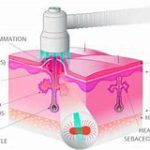Last Updated on 2 years by Francis
Contents
How to Speed Up Peeling After Chemical Peel
Chemical peels can be a great way to improve your skin’s appearance. But what do you do if you want to speed up the peeling process? Here are 5 simple tips to help you out.
After a Chemical Peel Chemical peels can help turn sun damaged skin into fantastic, radiant skin. This type of treatment helps reduce hyper-pigmentation and improves skin tone, while leaving the skin noticeably brighter and smoother.
Chemical peels are a skin resurfacing procedure in which we apply a chemical solution to the skin which peels away the top layers. After the skin has peeled away, the skin grows back smoother, younger, and more refreshed.
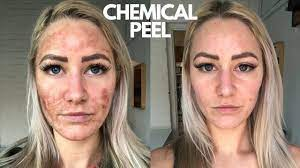
How to speed up peeling after a chemical peel
Perhaps the simplest way to speed up chemical peeling process is by drinking plenty of fluids. Give your skin the hydration it needs to dissolve the dead skin cells and help reduce inflammation.
Additionally, you may want to consider applying topical moisturizers or sunscreens before your peel treatment in order to protect your skin from further damage.
If you are experiencing redness, burning, swelling, or itching, stop the treatment and see a doctor as these could be signs of complications.
Also, avoid self-injury such as rubbing too hard where treatments were applied – this could strip away valuable layers of skin! Finally, take care not to pick at or scratch any scabs – this can lead to infection.
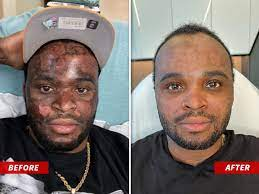
Tips for speeding up the healing process following a chemical peel
Following a chemical peel, your skin may feel tight and dry. Here are five tips to help speed up the healing process:
Apply a topical cream or lotion to your skin immediately following your peel. This will help to soothe and protect your skin. Treatment containing vitamin E or other ingredients to help your skin heal more effectively.
Avoid direct sunlight and water for the first few days after your peel. This will help to speed up the healing process.
Applying moisturizer every day to your skin, even if it feels dry. This will help to keep your skin hydrated and protected from further damage.
If applying moisturizer just stings too bad, listen to your body and stop. Try using other alternatives like aloe vera gel, coconut oil, or petroleum jelly instead.
Avoid applying makeup for the first few days after your peel. This will help to keep your skin free from irritants and pollutants.
Apply a heating pad or cold pack to your skin as needed for relief. This can help to reduce inflammation and pain, and speed up the healing process.
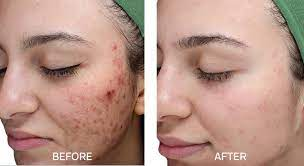
Ways to reduce inflammation and redness during peeling
One of the most common complaints following a chemical peel is inflammation and redness. There are a few things you can do to help reduce these symptoms.
First, make sure to hydrate well. Drink plenty of water, juice, or broth to help reduce inflammation and swelling.
Second, take ibuprofen or other pain relievers as needed. These will help reduce the pain and inflammation associated with peeling.
Third, avoid sun exposure. Sun exposure can cause further inflammation and redness. Stay out of the sun as much as possible while your skin is healing.
Fourth, use an anti-inflammatory cream before and after your peel. This will help reduce the inflammation and redness that may occur.
Finally, keep your skin clean and dry. This will help to reduce the amount of inflammation that occurs.
Having the perfect skin is hard to get on your own; especially if you have acne scars and fine lines and wrinkles.
5 Simple Tips For Reducing Post-Peel Symptoms
Limit sun exposure.
When it comes to post-peel symptoms, many people wonder how they can speed up the healing process. While there’s no one magical solution, following these five tips should help reduce inflammation and redness and make your skin feel smoother and more revitalized.
Limit sun exposure: The sun is a major cause of post-peel skin irritation. Be sure to apply sunscreen every day after your peel session and avoid the sun completely for at least two days after your procedure.
Drink plenty of water: Keep hydrated by drinking plenty of fluids throughout the day, especially right after your peel. This will help limit swelling and promote faster healing.
Apply OCM (occlusive cream mantle): Applying an OCM (occlusive cream mantle) can help to heal your skin faster and reduce the appearance of redness. This type of product helps trap moisture and lock in cellular renewal, which helps decrease inflammation and redness.
Exfoliate regularly: Even after you’ve healed from a peel, exfoliating will help keep your skin looking its best. Apply a gentle scrub three or four times a week to break up dry skin cells and promote healthy cell turnover.
Use healing ointments: If post-peel symptoms persist beyond two weeks, consider using a topical healing ointment such as cortisone or emu oil to soothe the skin. These products work by inhibiting the skin’s inflammatory response, which can help speed up healing.
The peeling may take anywhere from 7-10 days on average or longer depending on internal and external factors such as skin type, age, weather, lifestyle, and hormones.
Gently cleanse the skin.
If you’re experiencing post-peel symptoms such as redness, inflammation, and dryness, there are a few things you can do to reduce them. First, gently cleanse the skin with a mild soap and cool water. Second, use a topical cream or lotion to soothe the skin. Finally, take ibuprofen or another pain reliever as needed.
Apply a soothing lotion or cream.
If you are experiencing post-peel symptoms such as peeling, redness, and even swelling, try one or more of these tips to reduce discomfort. First, drink plenty of fluids to help flush out the materia
Take short, lukewarm showers.
If you’re experiencing any post-peel symptoms, take short, lukewarm showers to help reduce inflammation and redness. Additionally, drink plenty of fluids to help flush the skin of any residual chemicals. Finally, apply a topical cream or gel to help soothe and protect the skin.
How to properly care for your skin following a chemical peel treatment
Following a chemical peel treatment, your skin will be raw and feeling uncomfortable. Pay particular attention to cleansing, moisturizing, and protecting your newly exposed skin with sunscreen. Follow these five tips for speeding up the peeling process:
Take short, lukewarm showers instead of cold ones. Cold water can cause discomfort and lead to excessive bleeding.
Apply gentle cleansers to the area before you peel. Gentle acids can irritate the skin and increase the risk of bacterial infection. Use a pH-balanced cleanser that contains hyaluronic acid or benzoylecgonine as a healing agent; these ingredients help retain moisture in the skin after treatment is complete.
Moisten your face and body well following showering by using steam or some type of non-drying cream like aloe vera gel or coconut oil.
Never scrub your chemical peel treated skin harshly; this could damage the delicate layer of new skin that has formed.
Make sure to apply an SPF 30+, broad-spectrum sunscreen daily after treatment is complete to shield against sunburn, aging effects, and even deeper wrinkles caused by photodamage (UV radiation).
Preventing future blemishes from forming after a chemical peel procedure
If you have had a chemical peel treatment and are concerned about the appearance of future blemishes, there are several things you can do to help prevent them from forming.
First, be sure to take care of your skin following the procedure by following the Guidelines for Post-Peel Care provided by your doctor or aesthetician.
This will help ensure that your skin heals well and looks its best.
Additionally, make sure to use sunscreen every day both before and after the treatment, as sun exposure can aggravate post-peel skin problems such as acne scarring.
And finally, keep in mind that chemical peels are not a magic cure-all; they only work to improve the appearance of skin lesions. So if you still experience blemishes after undergoing a peel procedure, it is important to continue using skin care products recommended by your doctor or aesthetician along with regular sun protection.
If you want to speed up the peeling process after a chemical peel, there are a few things you can do. First, make sure you keep your skin hydrated by drinking plenty of water and using a hydrating moisturizer. You can also help the peeling process along by gently exfoliating your skin with a soft washcloth or loofah. Finally, avoid picking at or scratching your skin while it’s peeling, as this can cause irritation and even scarring.
Tell me the chemical peel?
Chemical peeling involves placing a solution of acids on the face to help it peel out of the top layer. This translates to smoother skin that carries less blemishes and scarring. But be aware that this species also reflects more sun radiation.
Chemical peels are aimed at improving appearance and have many different uses in skin problems.
Chemical peels are generally harmless for the majority of the skin types according to the application depending upon the type of product. This treatment is particularly safe for those with darker skin, ACTINICAL keratosis.
Deep Peels
Deep peels are no longer used because they have a higher risk of complications and take longer to heal. After your peeling operation is complete, however, it is bandaged. Under the bandage swellings dark redness. Eventually the resulting thick skin cells die in about 24 hours with oozing or cracks and fever. Peelings will begin between days 3 and 4 and continue through day
Your doctor is able to give you instructions on how to care for damaged skin. After 6 months skin is healed completely.
Everything you need to know about chemical peels
Before talking to the post-care industry. Chemical peels can be used in conjunction with any chemical peel. AHA (alphahydroxy) acid BHA and TCA (trichloroacetic acid) are commonly used. She added that chemical peels could be used to remove skin and reveal new skin that is healthier.
Light or Superficial Peels
The peel causes an extreme redness that can result when it is sunburned. The peeling of light peels can start in 1-2 days. Citations. The commonly used superficial peels for clinical uses are 30% glycolic acid 30% salicylic acid 30-40% pyruvitic acid lactic acid & mandel acid. Reference. How should we prepare ourselves after a chemical peel?
Can I wear makeup?
If the foundation is too thick it might show peeling or flaking. Instead choose a moisturiser that is moisturizing or tinted.
It is best to avoid makeup for a while after a medium peel or deep peel. Applying makeup too soon after the peel can irritate your skin and slow down your recovery.
How do I make my skin peel faster after a chemical peel?
Unfortunately, there is no magic tool for quick healing and peeling. Please take care of a soft clean skin and hydration during your recovery.
How do you speed up peeling skin?
Tell me the best ways you can stop peeling your face? Let the skin dry before washing it. … Hydrating. … Apply a moisturiser. … Apply gentle exfoliation. … Adding humidification. … Protection for skin from sun.
How long does it take for your skin to start peeling after a chemical peel?
The peeling will usually be completed within 24 hours following the treatment. It is essential you don’t remove the peeling skin as peeling is minimal and easy to control with moisturizer. Premature peeling results in a wet, cracked, dry skin that can lead to hyperpigmentation.
Why am I not peeling after a chemical peel?
Sometimes peeling does not make a big difference. Peeling is an added bonus. The actual “peeling” takes place in cells. She said this is one reason many people don’t see visible flaking once peeling is done.

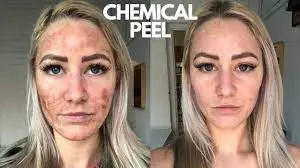
.jpg)
.jpg)
.jpg)
.jpg)
